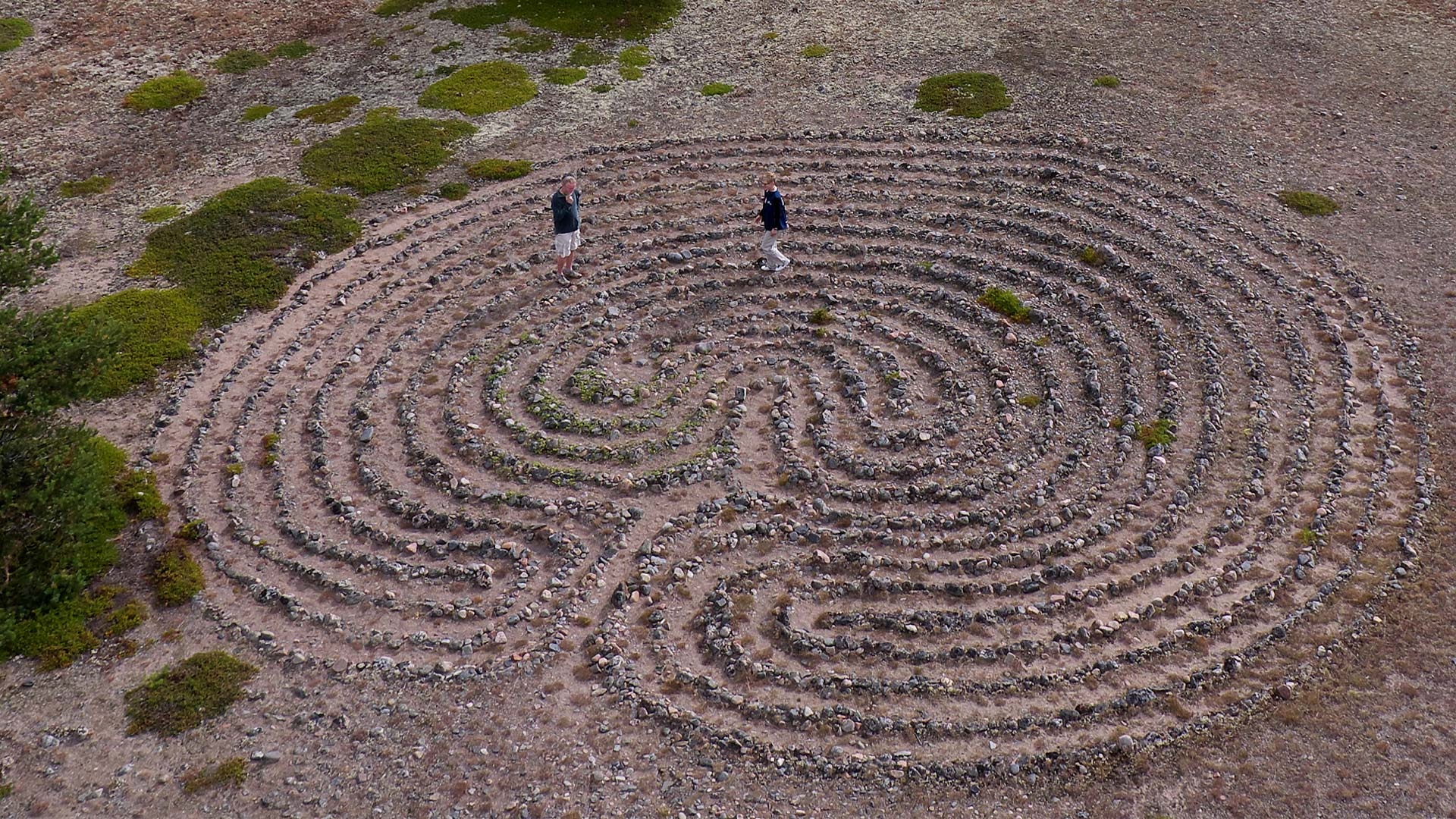In Sweden, there are about 300 known pristine labyrinths, about 100 of these can be found on the coast and the islands of Swedish Lapland. With all certainty, there are more labyrinths hidden under the moss and sand in the archipelago. One was discovered on the island Strömmingsören close to Hindersön, in Luleå archipelago, as late as 1998.
The pattern created in the labyrinths is old and known by historians as far as 3,000 years back. The pattern is believed to have originated in the Mediterranean. The same pattern has been found on coins from Knossos in Greece, clay tablets from Rome, Italy, on church walls in France and a convent in Nepal, amongst other places.
The history of labyrinths in Sweden
The custom of creating labyrinths probably originated in what now is known as southern Sweden sometime around 400-500 A.D. In the middle of Sweden, the labyrinths are often found close to old tribal communities or old burial grounds. The original use may have been connected to fecundity rites. North of Stockholm there are no labyrinths in the inland except for one location: Edefors, 100 km upstream Luleå River – a location famous for its salmon fishing since the dark ages (well, almost).
When the northern part of Sweden was colonised in the 13th and 14th century, likely, the tradition of building labyrinths followed north along the coastline. The labyrinths in the northern parts of Sweden have always been regarded as closely related to hunting and fishing.
We can only guess how people used to utilise the labyrinths. One would likely walk through them to earn fisher’s luck or successful hunting. The Swedish National Heritage Board has dated a lot of the labyrinths during an inventory of ancient monuments in the 1980s.
Find the labyrinths of Swedish Lapland
The labyrinths can be found on many islands and the mainland close to the coastline. On Bjuröklubb, a peninsula south of Skellefteå, there are many cultural-historical sites to be found.
At the fishing village of Vånön close to Burvik, there is a labyrinth in the woods, but when it was built many hundred years ago, the site was close to the beach. The land rise can often help date the labyrinth.
Stenskär, Kluntarna in Piteå, Kluntarna in Luleå, Renskär, Seskarö Furö and Haparanda Sandskär are some of the island of Swedish Lapland where you can find labyrinths.
Most of the labyrinths are found in the eastern part of the archipelago outside the coast of Haparanda.


























